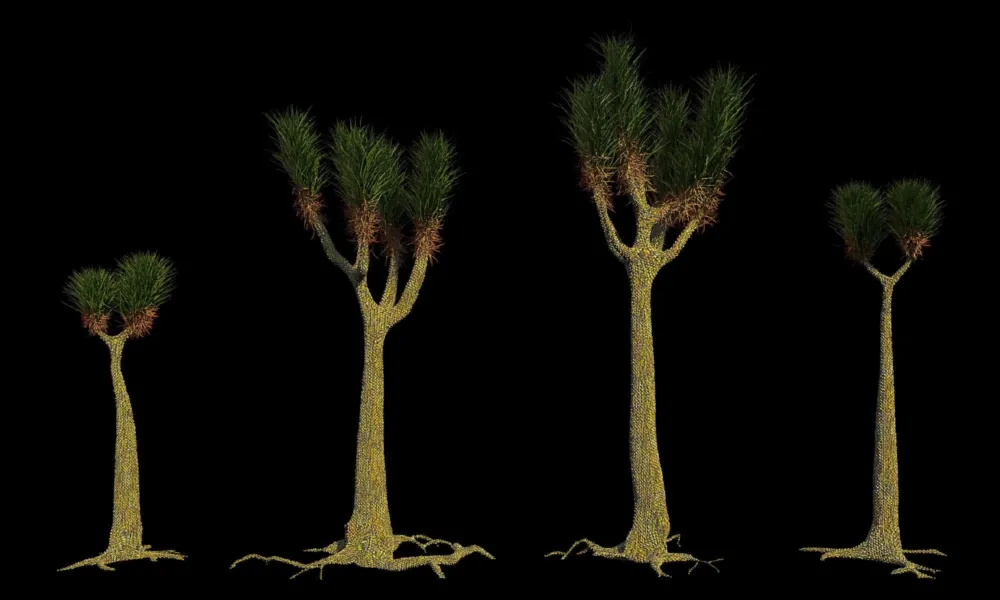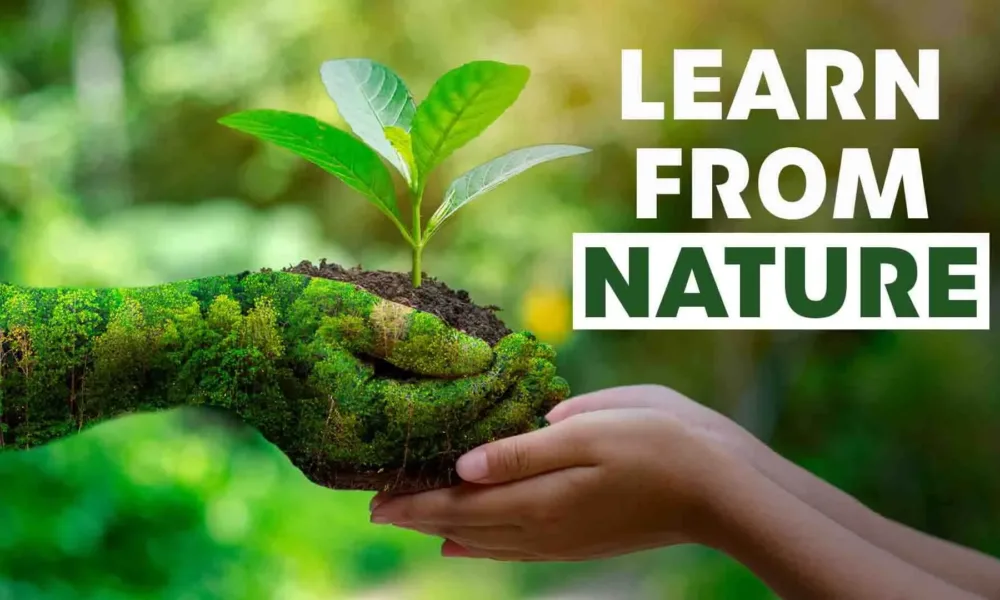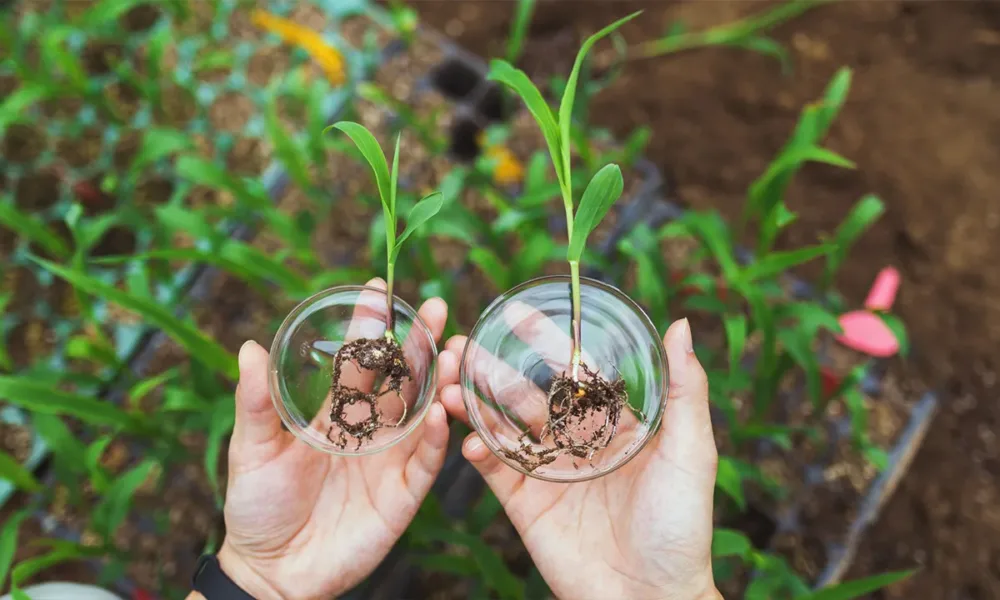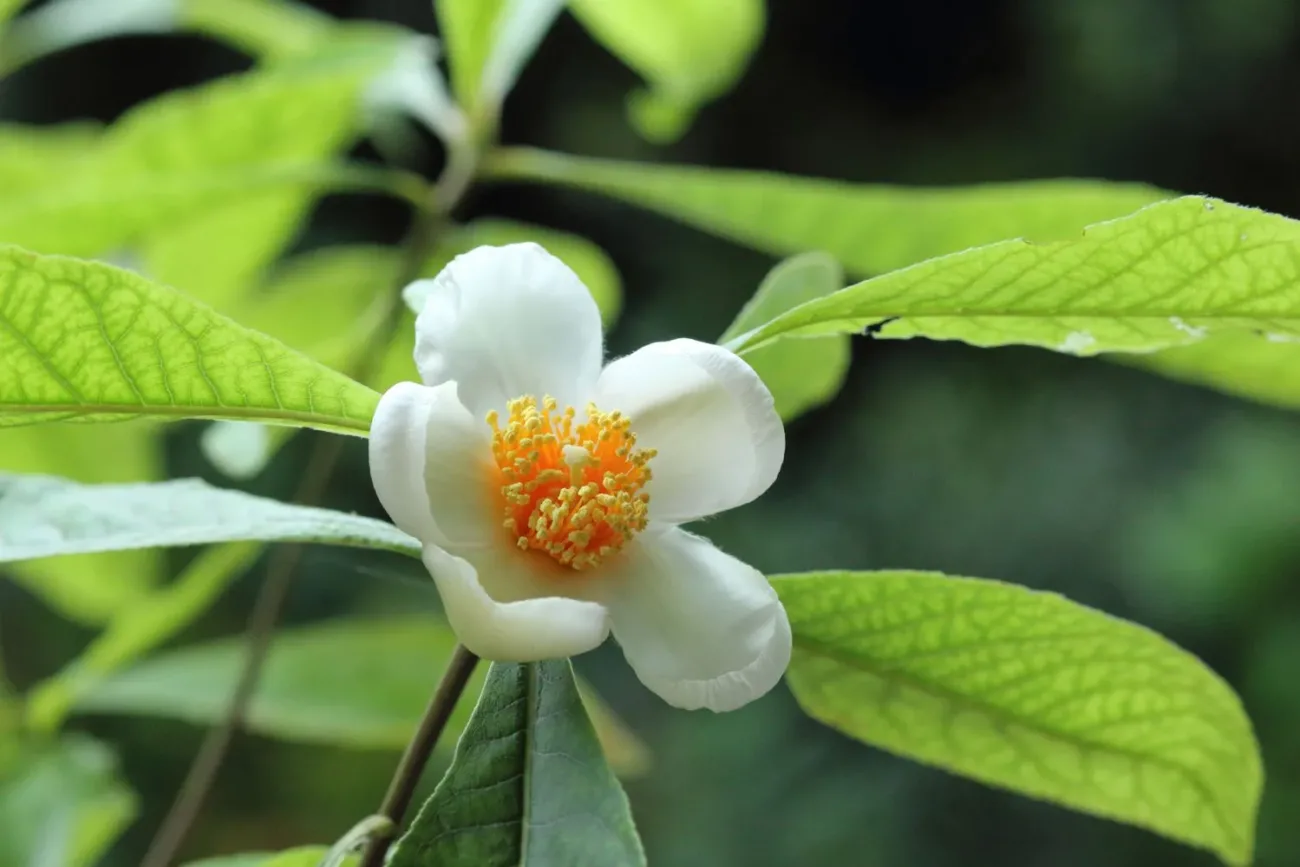In an era when environmental headlines often bring tales of loss—species vanishing, forests shrinking, ecosystems collapsing—there occasionally emerges a story so unexpectedly beautiful that it rekindles hope for our planet. One such story begins not with human triumph, but with a quiet miracle of nature: a plant thought to be extinct has reappeared, sprouting again in the wild where it once disappeared entirely.
Imagine the scene. A team of botanists, trekking through familiar terrain long stripped of its signature flora, suddenly spots something green, fragile, and impossibly familiar pushing through the soil. Leaves once seen only in old photographs, petals once described only in textbooks, and a scent once believed lost to history—alive again.
This is not just a scientific discovery. It is a poetic reminder that life, given even the slightest chance, finds a way to return.
Table of contents
- The Story of a Plant Lost and Found
- A Modern Miracle: The Rediscovery Moment
- How Could It Have Survived? The Science Behind the Miracle
- Stories from Around the World: Nature’s Comeback Champions
- The Emotional Impact of Rediscovery
- The Human Role: From Exploiters to Protectors
- Lessons Nature Teaches Us
- The Symbolism of the Rediscovered Plant
- The Power of Ecological Hope
- Faith in the Smallest Green Sprout
- How Rediscovered Plants Help the Planet
- The Next Step: Protecting Nature’s Comebacks
- A Message for the Future
- Conclusion: Life’s Quiet Comeback
- Stay Inspired on Your Nature Journey
The Story of a Plant Lost and Found
Across the world, conservationists work tirelessly to preserve Earth’s biodiversity. Yet sometimes, despite every effort, species vanish—overlooked, overharvested, or overtaken by changing climates. When a plant is declared “extinct in the wild,” it means no living specimens can be found in their natural habitat. They may survive in seed banks or botanical gardens, but the natural ecological harmony that once nurtured them is gone.
However, every once in a while, nature surprises us. In the last few decades, dozens of plants believed extinct have resurfaced unexpectedly—from remote islands to abandoned farmland, from volcanic slopes to quiet forest clearings.
Take, for instance, the Chile sandalwood (Santalum fernandezianum), once harvested to extinction for its aromatic wood in the 19th century. Or the Woolly St. John’s Wort rediscovered in the UK after a century-long disappearance. The reappearance of such plants reminds scientists that extinction, at least for flora, is sometimes not final—it’s a long pause in an ongoing conversation between Earth and time.
A Modern Miracle: The Rediscovery Moment
Let’s paint a scene inspired by true events that echo around the world.
In a mountainous region, an early morning mist clings to the rocks. Botanists, armed with notebooks and cameras, navigate the slopes searching for new growth after a recent conservation initiative. Amid the shrubs, one of them pauses, his eyes fixed on a small cluster of unfamiliar leaves. The pattern looks hauntingly familiar—the serrated edges, the unique hue of green, the delicate structure of the stem.
He bends closer, his heart racing, flips through pages of field notes, and suddenly realizes: it can’t be—but it is.
The plant once thought lost forever—the one his mentors spoke of in wistful tones—has returned.
After years of being written off, it is growing again, wild and free.
This rediscovery is not just a triumph of science; it is a symbol of endurance. Somewhere in the soil, seeds that had lain dormant through decades of drought, fire, or human neglect have found the right moment to awaken. Life had been waiting all along.
How Could It Have Survived? The Science Behind the Miracle
Plants possess astonishing survival mechanisms. Seeds can remain viable for years—sometimes centuries—waiting for the right environmental conditions to germinate. These “seed banks” in the soil act as nature’s time capsules.

In many rediscovery cases, the extinction declaration was premature. Plants that appear gone are often hidden in remote or inaccessible areas, surviving in microhabitats scientists haven’t explored recently. Others regenerate after natural events like fires or floods that create the ideal growth conditions.
Additionally, the reemergence of once-extinct flora is often linked to rewilding efforts—initiatives where degraded ecosystems are allowed to recover naturally. When human interference decreases and pollinators return, seeds finally get the chance to sprout again.
In essence, nature is incredibly resilient when given space and time to heal.
Stories from Around the World: Nature’s Comeback Champions
1. Hibiscadelphus woodii — The Hawaiian Resurrection
On the island of Kauaʻi, a plant called Hibiscadelphus woodii was declared extinct in 2016 after the last known specimen died in a rockfall. Yet in 2019, hikers discovered several healthy individuals growing in a nearly inaccessible cliff area. Using drones, botanists confirmed the identity and collected seeds for propagation. The story was hailed as “a second chance for a lost species.”
2. Chile’s Puya raimondii — The Giant of the Andes
Known as the “Queen of the Andes,” this massive bromeliad blooms only once every hundred years before dying. Scientists believed it had vanished from several regions due to climate change, but in 2022, new clusters were found in a high-altitude valley. The discovery reignited hopes for the plant’s slow but determined recovery.
3. Coleanthus subtilis — The European Phantom Grass
Thought extinct in many parts of Europe for over 50 years, this delicate grass reappeared after a flood in the Czech Republic exposed dormant seeds. It taught conservationists that even temporary wetlands can hold life waiting patiently for the right moment to rise again.
4. Franklin Tree (Franklinia alatamaha) — America’s Lost Treasure
Though extinct in the wild since the early 1800s, the Franklin tree survived through seeds preserved by early botanists. Today, it thrives in botanical gardens, and conservationists are reintroducing it to its native Georgia habitat—proof that careful stewardship can rewrite nature’s story.
The Emotional Impact of Rediscovery
For scientists and conservationists, finding an “extinct” plant is an emotional experience—part joy, part awe, and part responsibility. Imagine dedicating your career to studying something you’ve never seen alive, only to one day hold its living form in your hands. It’s a moment that transcends science—it touches the soul.
These rediscoveries remind us that our planet is far from hopeless. Life doesn’t simply vanish; it adapts, hides, waits. And when the balance shifts in its favor, it reclaims the earth quietly but powerfully.
For local communities, these moments often spark pride and renewed interest in protecting their environment. A rediscovered plant becomes a symbol of resilience, a living metaphor for renewal after loss.
The Human Role: From Exploiters to Protectors
While nature’s ability to rebound is remarkable, it cannot thrive indefinitely without human responsibility. Many of these rediscoveries are fragile victories—if unprotected, the plants could vanish again.
In recent decades, conservation has shifted from preservation alone to active ecological restoration. Rather than isolating nature, scientists now focus on reintroducing native species, restoring pollinator populations, and engaging local communities in stewardship.
Botanical gardens, too, play a key role by maintaining living collections and seed banks that serve as lifelines for species on the brink. Organizations like Kew Gardens, Botanic Gardens Conservation International (BGCI), and Millennium Seed Bank have catalogued millions of seeds to ensure that, even if disaster strikes, plants have a future.
The rediscovery of a lost plant is often the spark that drives such efforts forward—a reminder of what can be saved if we act in time.
Lessons Nature Teaches Us
The comeback of a once-extinct plant offers lessons that reach far beyond ecology:

- Patience:
Nature works on its own clock. What seems gone may only be resting. - Resilience:
Life adapts to even the harshest conditions; all it needs is a window of opportunity. - Hope:
Even amid ecological despair, recovery is always possible. - Responsibility:
Human actions shape the planet’s future—for better or worse. - Interconnectedness:
Every plant, from the tallest tree to the smallest wildflower, plays a part in the grand web of life.
These lessons mirror our own human struggles. Like those hidden seeds, we too can lie dormant in hardship, waiting for the right moment to rise again.
The Symbolism of the Rediscovered Plant
The sight of a once-extinct flower blooming again in the wild is more than a scientific milestone—it’s a metaphor for rebirth. It symbolizes the possibility of second chances, the strength found in stillness, and the quiet power of endurance.
For many environmentalists, these rediscoveries embody the balance between despair and hope—a reminder that while humanity has caused deep wounds to the Earth, healing is still within reach. As one ecologist put it, “Every leaf that returns is a message: life forgives.”
The Power of Ecological Hope
In environmental psychology, “ecological hope” is the belief that humans and nature can coexist harmoniously if both are given respect and care. Stories of rediscovered species nurture this hope. They remind people that not all is lost, that the narrative of extinction can still be rewritten.
For communities facing environmental fatigue or despair, this kind of hope matters. It turns abstract conservation goals into tangible, emotional truths: if one plant can return, so can others. If a hillside can bloom again, maybe a forest can regrow, a river can clear, and a planet can heal.
Faith in the Smallest Green Sprout
There’s something profoundly humbling about seeing a delicate plant defy extinction. It challenges our assumptions about control, dominance, and despair. It tells us that the Earth does not belong to us—we belong to it.
Each rediscovery serves as a living prayer, whispered from the soil: Don’t give up on me yet.
And perhaps that’s the most important message these plants bring—to scientists, to farmers, to city dwellers, to every person who feels disheartened by the state of the world. The Earth is not finished speaking.
How Rediscovered Plants Help the Planet
Every returned species contributes to biodiversity, restoring balance in subtle but powerful ways. Plants are the foundation of all ecosystems—they provide food, oxygen, and shelter. When a lost species returns, it brings back unique pollination relationships, soil enrichment processes, and even cultural heritage linked to indigenous traditions.

For instance:
- The return of native orchids in tropical forests signals a rebound of pollinators like bees and moths.
- The recovery of grasses and shrubs stabilizes soil and prevents erosion.
- The reappearance of rare medicinal plants can revive traditional healing practices and community identity.
Thus, every rediscovery is both ecological and emotional healing—a bridge between the natural world and human culture.
The Next Step: Protecting Nature’s Comebacks
Rediscovering a plant is only the beginning. The next challenge is ensuring its survival. Conservationists now use a mix of traditional wisdom and modern technology to do this effectively.
- Drone Mapping & Satellite Imaging: To identify and monitor regrowth areas.
- Seed Banking & DNA Sequencing: To preserve genetic diversity for future propagation.
- Community Involvement: Empowering locals to protect and nurture rediscovered species.
- Eco-tourism Programs: Providing sustainable income linked to conservation, ensuring plants are valued alive rather than exploited.
Every rediscovery reignites the global conversation on how to better coexist with the natural world—not as owners, but as caretakers.
A Message for the Future
Perhaps the true gift of these botanical resurrections is perspective. In the vast timeline of Earth, humanity is still young. We are only beginning to understand how intertwined our fate is with that of the plants and animals around us.
Every time a “lost” plant returns, it reminds us of the possibilities that bloom from humility and care. It’s proof that not all endings are permanent—and that sometimes, the Earth writes its own happy endings.
If one flower can return after decades of silence, maybe the same hope applies to everything we’ve damaged—our forests, our oceans, even our human spirit.
Conclusion: Life’s Quiet Comeback
The rediscovery of a once-extinct plant is not just a story of nature reclaiming its ground; it’s a mirror held up to humanity. It asks us to remember that destruction is not destiny, that life has extraordinary resilience, and that hope often hides in the most unexpected places.
Somewhere, right now, a forgotten seed is awakening beneath the earth.
Someday soon, it will rise through the soil, reach for the light, and remind us once again that life—persistent, fragile, and miraculous—always finds a way.
Stay Inspired on Your Nature Journey
If this story reminded you how nature finds its way back against all odds, here are a few more uplifting reads that celebrate renewal, resilience, and the quiet power of our planet to heal itself:
- Spix’s Macaw Returns to the Wild: A Historic Step in Wildlife Conservation – The stunning comeback of a bird once thought gone forever.
- Great Barrier Reef Shows Signs of Recovery: A Hopeful Turn for Coral Ecosystems – Discover how reefs are slowly regaining their color and vitality.
- Patagonia Azul: Argentina Establishes Massive Marine Reserve – A powerful step toward ocean preservation and biodiversity protection.
- Bradford Pennine Gateway Becomes New National Nature Reserve – How community efforts helped turn local land into a thriving wildlife sanctuary.
- Healing Through Action: A Family’s Legacy in Ocean Conservation – An inspiring tale of love, loss, and purpose that’s restoring life beneath the waves.
